 |
 |
 |
| |
INDIVIDUAL AND POPULATION-LEVEL IMPACT OF HCV TREATMENT AMONG PEOPLE WHO INJECT DRUGS
|
| |
| |
Probability of cirrhosis declined from 2015 to 2018 from about 17% to about 7%, PWIDs Baltimore ALIVE Cohort due to DAAs. For every year since DAA treatment the odds of cirrhosis decreased by 56%. PLWH had higher rates of cirrhosis & those with higher HIV viral loads had higher rates of cirrhosis-these also had the higher log mean liver stiffness.
"Expansion of DAAs in the PWID community appears to have led to declines in liver disease progression at the individual and population level. Increasing access to all HCV infected persons, particularly those at greatest risk of liver disease progression will be critical to achieving HCV elimination targets.
CROI 2020
Javier Cepeda1, David L. Thomas2, Rachel E. Gicquelais3, Jacquie Astemborski3, Gregory D. Kirk3, Shruti H. Mehta3
1University of California San Diego, San Diego, CA, USA,2Johns Hopkins University School of Medicine, Baltimore, MD, USA,3Johns Hopkins Bloomberg School of Public Health, Baltimore, MD, USA
http://www.croiwebcasts.org/console/player/44802?mediaType=slideVideo&
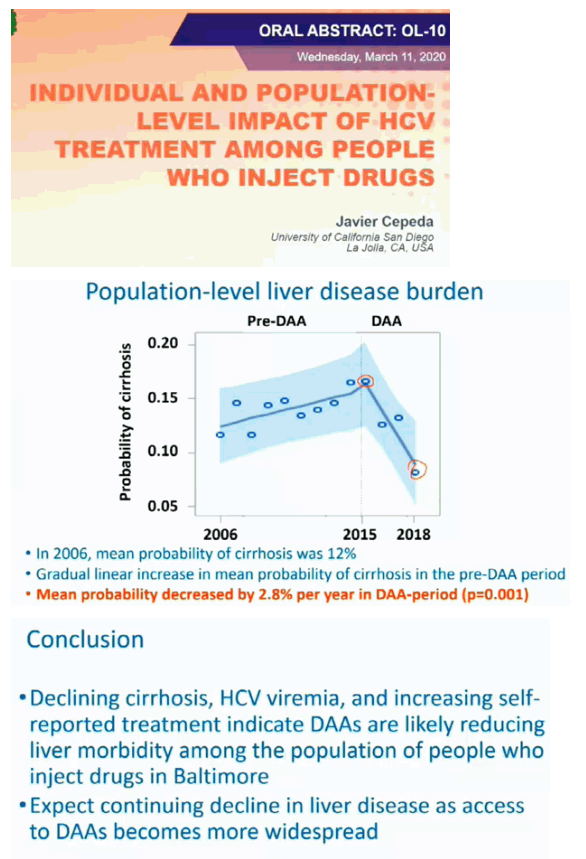
Abstract Body:
The availability of highly curative direct acting antivirals (DAA) has led to calls for elimination of HCV as a public health priority. Specifically, a key target is a 65% reduction in HCV-associated mortality by 2030. Mathematical models have predicted that dramatic scale-up of DAAs can achieve this ambitious target, however this has not been assessed empirically. We evaluate temporal trends in individual and population-level liver disease burden (as a proxy for HCV-related mortality) in a community-based cohort of people who inject drugs (PWID) in Baltimore in the context of expanding DAA use.
From 2005-2018, we collected 11,471 liver stiffness measurements (LSM) using transient elastography from 1,668 PWID who were HCV antibody positive. At the individual-level, we estimated the impact of DAAs on LSM using generalized linear mixed modeling after adjusting for age, sex, race, time, alcohol use and HIV status. To assess population-level impact, we used segmented regression to determine changes in the proportion of the population with cirrhosis (LSM ≥ 12.3 kPa) within and between two periods (before and after 2015) based on presumed scale-up of DAAs in the community.
Overall, 69% were male, mean age was 48, 33% were HIV co-infected, and 14% had cirrhosis at baseline. Only 2% reported ever receiving HCV treatment in 2014 which increased to 41% by 2018. After adjusting for confounders, PWID who reported receipt of DAA had significantly lower LSM (-0.88 kPa 95%CI: -0.91 kPa, -0.86 kPa, p<0.0001) compared to PWID who had not received DAAs. HIV/HCV co-infected PWID had significantly higher LSM, especially among those who not HIV virally suppressed (1.14 kPa, 95%CI: 1.08 kPa, 1.20 kPa, p<0.0001) compared to PWID who were HIV negative. At the population-level, we observed a significant rise in the proportion with cirrhosis within the cohort from 2005-2014 (mean log odds of cirrhosis increased each year by a factor of 0.13, p=0.006); however from 2015-2018, the proportion with cirrhosis declined (mean log odds decreased each year by a factor of 0.53, p=0.003, see figure).
Expansion of DAAs in the PWID community appears to have led to declines in liver disease progression at the individual and population level. Increasing access to all HCV infected persons, particularly those at greatest risk of liver disease progression will be critical to achieving HCV elimination targets.
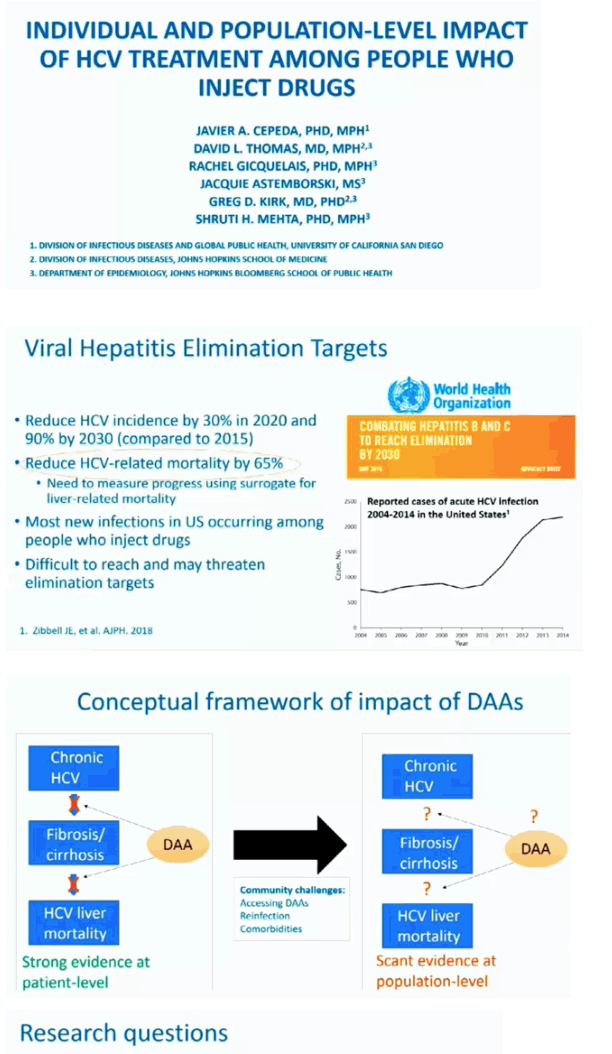
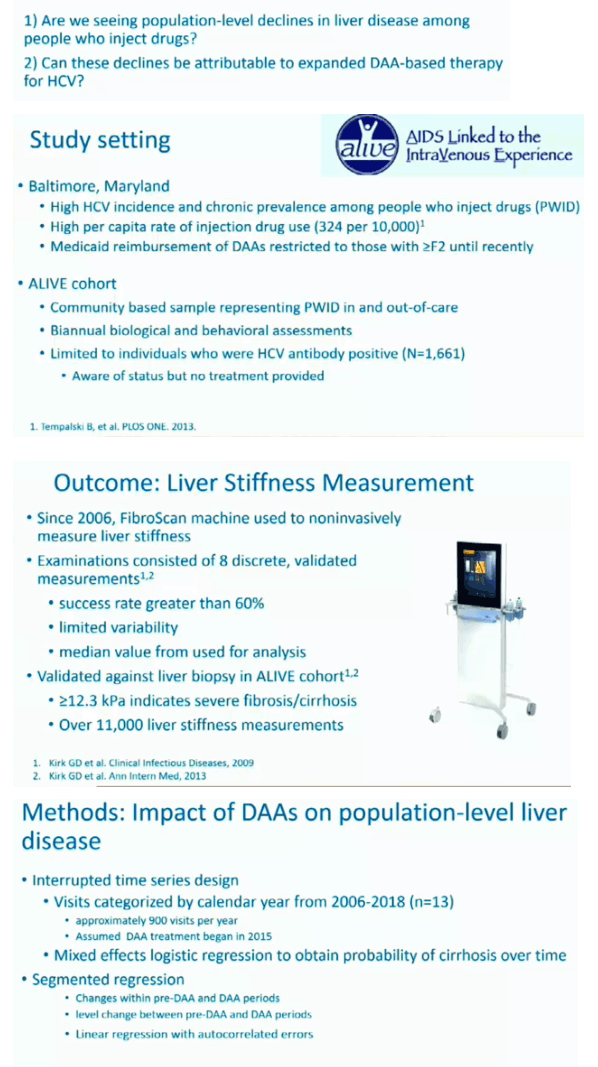
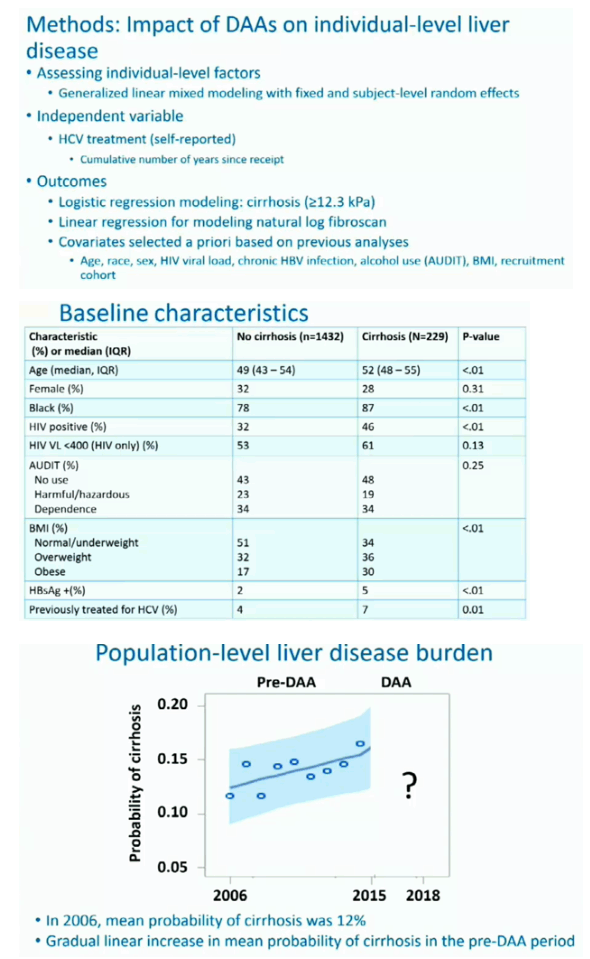
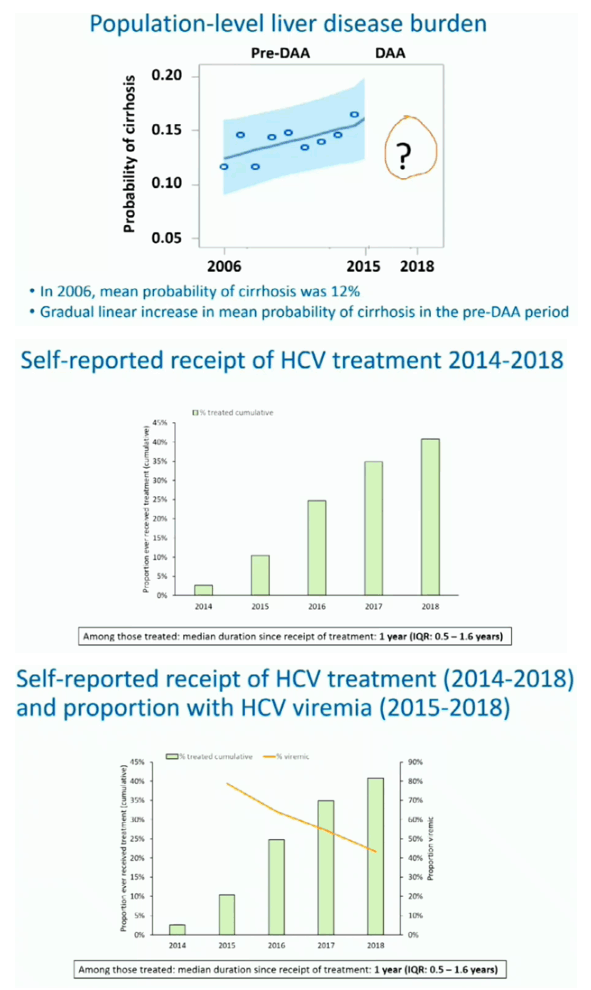
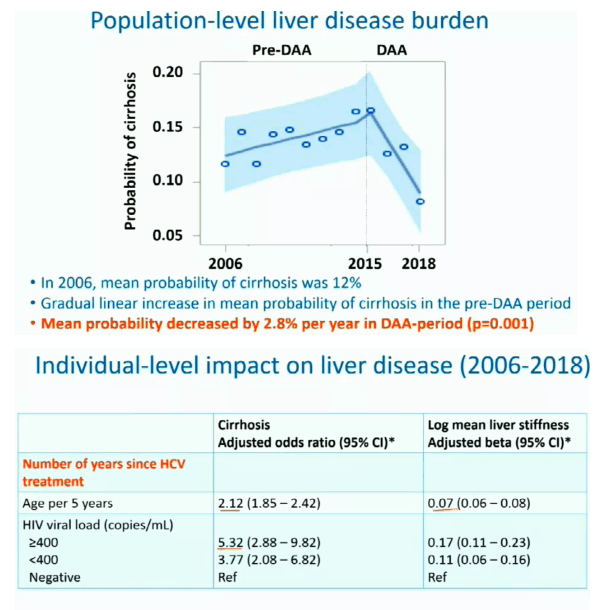
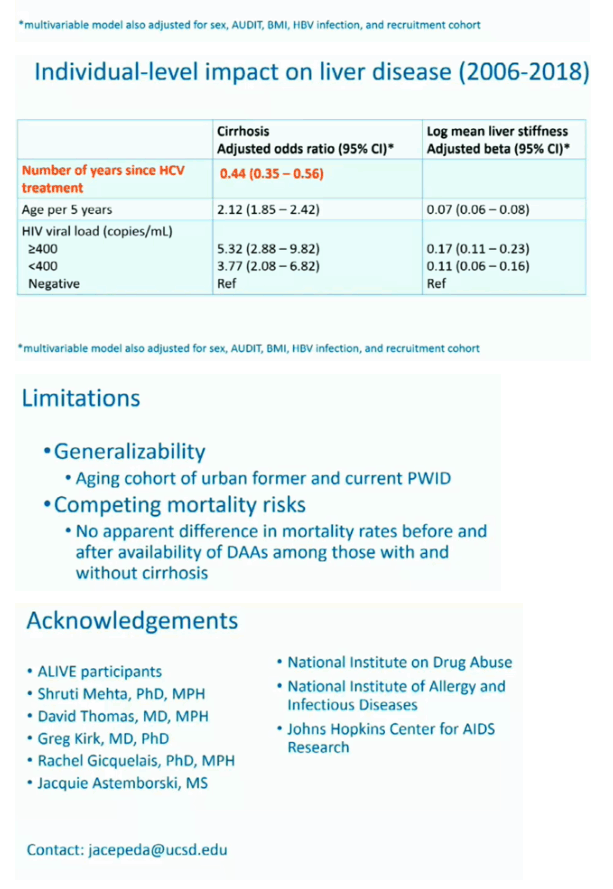
|
| |
|
 |
 |
|
|